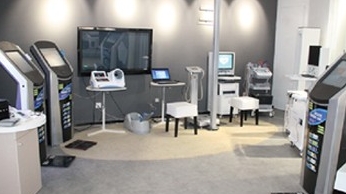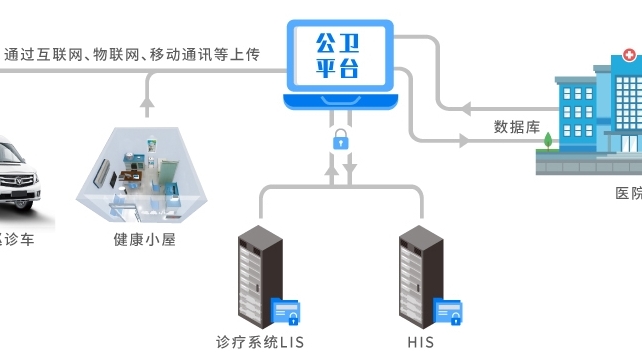 濟南易享醫療科技有限公司
濟南易享醫療科技有限公司
服務熱線:185 5315 8035
聯系地址:濟南市高新區新濼大街1666號齊盛廣場2號樓15樓
慢病隨訪包的內容是什么?
在慢性疾病日益高發的當下,慢病隨訪管理系統成為守護公眾健康的重要防線。通過有計劃、有組織的隨訪,能對慢性病患者進行長期、動態的跟蹤與管理,及時調整治療方案,提升患者生活質量。那么,慢病隨訪究竟涵蓋哪些核心內容呢?
In the current era of increasing prevalence of chronic diseases, the chronic disease follow-up management system has become an important defense line to safeguard public health. Through planned and organized follow-up, chronic disease patients can be tracked and managed in a long-term and dynamic manner, treatment plans can be adjusted in a timely manner, and the quality of life of patients can be improved. So, what are the core contents covered by chronic disease follow-up?
每次隨訪時,詳細收集患者近期疾病癥狀變化是基礎工作。以高血壓患者為例,需了解是否有頭痛、頭暈、心悸等不適癥狀,以及這些癥狀出現的頻率、程度和持續時間。對于糖尿病患者,則要關注有無多飲、多尿、多食、體重下降等典型癥狀,以及是否出現視力模糊、手腳麻木等并發癥表現。同時,收集患者既往疾病史,包括確診時間、治療過程中經歷的重大事件,如高血壓患者曾出現的高血壓危象,糖尿病患者發生過的低血糖事件等,這些信息能幫助醫生全面把握病情發展脈絡。
Detailed collection of recent disease symptom changes in patients during each follow-up is a fundamental task. Taking hypertensive patients as an example, it is necessary to understand whether there are any discomfort symptoms such as headache, dizziness, palpitations, as well as the frequency, degree, and duration of these symptoms. For patients with diabetes, we should pay attention to whether there are typical symptoms such as excessive drinking, urination, overeating, weight loss, and whether there are complications such as blurred vision, numbness of hands and feet. At the same time, collect the patient's past disease history, including the time of diagnosis, major events experienced in the treatment process, such as hypertension crisis in hypertension patients, hypoglycemia events in diabetes patients, etc. These information can help doctors fully grasp the development of the disease.
隨訪過程中,仔細詢問患者用藥情況必不可少。包括是否按時按量服藥,有無漏服、自行增減藥量現象。部分慢性病患者可能因藥物副作用,如降壓藥引起的干咳、降糖藥導致的胃腸道不適等,自行調整用藥,這會嚴重影響治療效果。醫生需評估藥物療效,根據患者病情變化和身體指標,適時調整藥物種類、劑量或給藥時間。同時,向患者強調遵醫囑用藥的重要性,提供科學的用藥指導,如某些藥物需飯前服用以促進吸收,某些藥物與食物同服可減輕胃腸道刺激等,確保患者安全、有效地用藥。
During the follow-up process, it is essential to carefully inquire about the patient's medication status. Including whether the medication is taken on time and in the prescribed amount, whether there are any missed doses, and whether there is a phenomenon of self adjustment of medication dosage. Some patients with chronic diseases may adjust their medication on their own due to drug side effects, such as dry cough caused by antihypertensive drugs and gastrointestinal discomfort caused by hypoglycemic drugs, which can seriously affect the treatment effect. Doctors need to evaluate the efficacy of drugs and adjust the type, dosage, or administration time of drugs in a timely manner based on changes in the patient's condition and physical indicators. At the same time, emphasizing the importance of following medical advice and providing scientific medication guidance to patients, such as taking certain medications before meals to promote absorption, and taking certain medications with food to reduce gastrointestinal irritation, ensures safe and effective medication for patients.

健康的生活方式是慢病管理的基石。隨訪時,醫生會深入了解患者飲食、運動、吸煙飲酒等生活習慣。在飲食方面,指導高血壓患者減少鈉鹽攝入,每天不超過 5 克,增加鉀攝入,多吃新鮮蔬菜、水果;糖尿病患者要遵循低糖、高纖維飲食原則,合理分配碳水化合物、蛋白質和脂肪比例。運動指導根據患者身體狀況個性化制定,如鼓勵高血壓、糖尿病患者每周進行至少 150 分鐘的中等強度有氧運動,像快走、慢跑、游泳等,運動頻率一般為每周 5 天左右,可分時段進行。對于吸煙飲酒的患者,強烈勸導戒煙限酒,告知其對慢性病病情的嚴重不良影響,如吸煙會加重心血管疾病風險,過量飲酒可干擾血糖控制等。
A healthy lifestyle is the cornerstone of chronic disease management. During follow-up, doctors will gain a deep understanding of the patient's lifestyle habits such as diet, exercise, smoking, and alcohol consumption. In terms of diet, guide hypertensive patients to reduce sodium intake by no more than 5 grams per day, increase potassium intake, and eat more fresh vegetables and fruits; Patients with diabetes should follow the principle of low sugar and high fiber diet, and reasonably allocate the proportion of carbohydrate, protein and fat. Exercise guidance is customized according to patients' physical conditions, such as encouraging patients with hypertension and diabetes to take at least 150 minutes of moderate intensity aerobic exercise every week, such as fast walking, jogging, swimming, etc. The frequency of exercise is generally about 5 days a week, which can be carried out in different periods. For patients who smoke and drink alcohol, it is strongly advised to quit smoking and limit alcohol consumption, informing them of the serious adverse effects on chronic diseases, such as smoking increasing the risk of cardiovascular disease and excessive alcohol consumption interfering with blood sugar control.
本文由慢病隨訪包友情奉獻.更多有關的知識請點擊:http://www.sunjl.com我們將會對您提出的疑問進行詳細的解答,歡迎您登錄網站留言.
This article is contributed by the Chronic Disease Follow up Package For more information, please click: http://www.sunjl.com We will provide detailed answers to your questions. You are welcome to log in to our website and leave a message




